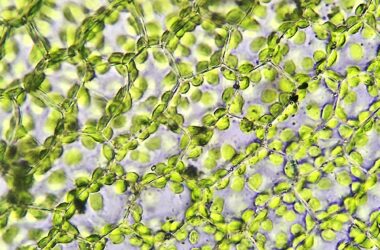
Prise en 1993, cette photo montre la mortalité des forêts historiques de cèdres de l’Atlas au Maroc. Crédit : Csaba Mátyás, professeur émérite, Université de Sopron, Hongrie.
Une équipe mondiale de scientifiques détermine une “empreinte digitale” pour déterminer à quel point la chaleur et la sécheresse sont excessives pour les forêts.
Les auteurs concluent que la limitation du réchauffement de la Terre déterminera la capacité de survie de nombreuses forêts de la planète.
Jusqu’à quel point les forêts de la Terre sont-elles trop chaudes et trop sèches ? Une nouvelle étude menée par une équipe internationale de chercheurs a trouvé les réponses – en examinant des décennies d’arbres mourants.
Vient d’être publié dans le journal Nature Communications, l’étude compile la première base de données mondiale d’événements de dépérissement forestier précisément géoréférencés, sur 675 sites remontant à 1970. L’étude, qui englobe tous les continents boisés, compare ensuite ces informations aux données climatiques existantes afin de déterminer les conditions climatiques de chaleur et de sécheresse qui ont provoqué ces épisodes de mortalité des arbres documentés.
“Dans cette étude, nous laissons les forêts de la Terre parler”, a déclaré William Hammond, un University of Florida plant ecophysiologist who led the study. “We collected data from previous studies documenting where and when trees died, and then analyzed what the climate was during mortality events, compared to long-term conditions.”
After performing the climate analysis on the observed forest mortality data, Hammond noted, a pattern emerged.
“What we found was that at the global scale, there was this consistently hotter, drier pattern – what we call a ‘hotter-drought fingerprint’ – that can show us how unusually hot or dry it has to get for forests to be at risk of death,” said Hammond, an assistant professor in the UF/IFAS agronomy department.
The fingerprint, he says, shows that forest mortality events consistently occurred when the typically hottest and driest months of the year got even warmer and drier.
“Our hotter-drought fingerprint revealed that global forest mortality is linked to intensified climate extremes,” Hammond said. “Using climate model data, we estimated how frequent these previously lethal climate conditions would become under further warming, compared to pre-industrial era climate – 22% more frequent at plus 2 degrees Celsius (plus 3.6 degrees Fahrenheit), to 140% more frequently at plus 4 degrees Celsius (plus 7.2 degrees Fahrenheit).”
Those higher temperatures would more than double how often forests around the world see tree-killing droughts, he adds.
“Plants do a phenomenal job of capturing and sequestering carbon,” Hammond said. “But death of the plants not only prevents their performing this critical carbon-capturing role, plants also start releasing carbon as they decay.”
Hammond says that relying, in part, upon trees and other plants to capture and sequester carbon, as some proposed climate solutions suggest, makes it is critical to understand how hot is ‘too hot,’ and how dry is ‘too dry.’ “Otherwise mortality events, like those included in our database, may wipe out planned carbon gains.”
One of the study’s co-authors, Cuauhtémoc Sáenz-Romero of Universidad Michoacana de San Nicolás de Hidalgo in Mexico, offered an example of how recent climate patterns affected a Mexican temperate forest.
“In recent years, the dry and warm March to May season is even more dry than usual, but also warmer than ever,” he said. “This combination is inducing a lot of stress on the trees before the arrival of the next June-to-October rainy season. For example, in 2021, more than 8,000 mature trees were killed by bark beetles in the Monarch Butterfly Biosphere Reserve in Central Mexico. The effect of the La Niña Pacific Ocean stream resulted in drier, warmer conditions; a deadly combination that favored pest outbreaks.”
Hammond has also developed an interactive application on the website of the International Tree Mortality Network to host the database online and to allow others to submit additional observations of forest mortality to the database.
The organization, founded and coordinated by co-author Henrik Hartmann from the Max Planck Institute in Germany, among others, is a collaborative effort between scientists on every forested continent and aims to coordinate international research efforts on forest die-off events. Hammond is the network’s data management group leader.
EXPLAINERS
‘Georeferenced’
Using maps or aerial images, scientists assign to them real-world coordinates.
‘Ground-truthed’
Information confirmed or validated by direct observation and measurement. In the case of machine learning, it refers to checking results for accuracy.
“We’re hoping that this paper will create a bit of urgency around the need to understand the role of warming on forest mortality,” Hammond said. “Also, we expect that our open-access database will enable additional studies, including other climate fingerprints from local to regional scales. Current climate modeling and remote-sensing research communities need ground-truthed datasets to validate their predictions of important processes like forest mortality. One of the really important elements to this study was bringing all this data together for the first time, so that we can ask a question like this at the planetary scale.”
Reference: “Global field observations of tree die-off reveal hotter-drought fingerprint for Earth’s forests” 5 April 2022, Nature Communications.
DOI: 10.1038/s41467-022-29289-2
In addition to Hammond, Sáenz-Romero and Hartmann, it is also co-authored by A. Park Williams, University of California, Los Angeles; John Abatzoglou, University of California, Merced; Henry D. Adams, Washington State University; Tamir Klein, Weizmann Institute of Science; Rosana López, Universidad Politécnica de Madrid, Spain; David D. Breshears, University of Arizona; and Craig D. Allen, University of New Mexico.



